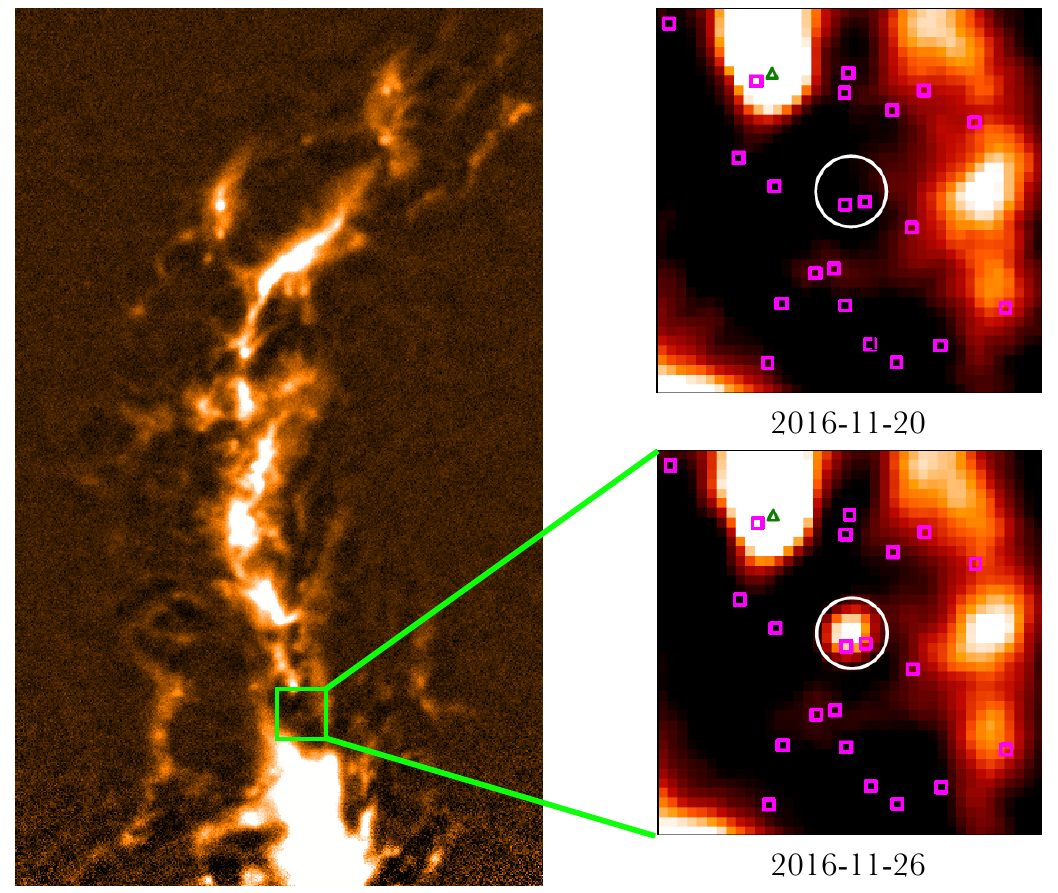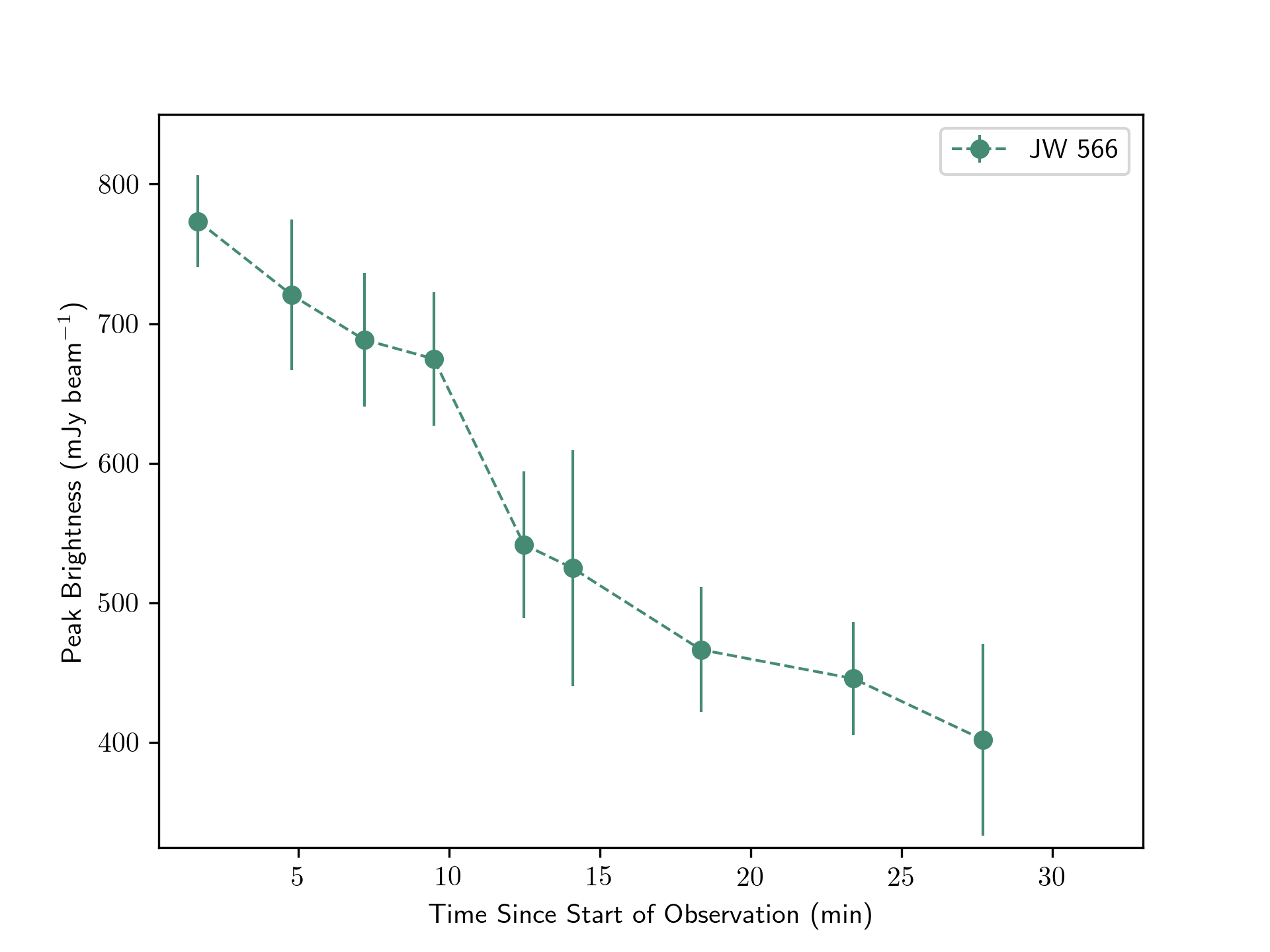On November 26th, 2016, the JCMT Transient Survey Team observed what is estimated to be the most luminous known flare associated with a young stellar object. It is also the first coronal flare discovered at submillimetre wavelengths. The brief flash of light occurred in the direction of a binary system of forming stars known as “JW 566” in the Orion Nebula and it carried ten billion times the amount of energy of the solar flares observed around the Sun.

Left: The Orion Nebula as seen by SCUBA-2 at 850 microns. Right: Two images of
the field surrounded by the green square taken 6 days apart. Small rectangles/triangles show the
positions of known young stars found by other telescopes. On November 20th, 2016, there was
no signal. On November 26th, 2016, the flare was observed while it was already dimming from
its (unseen) maximum brightness.
The flare was discovered by JCMT support astronomer Dr. Steve Mairs using advanced image analysis techniques that had been developed by the Transient Survey team over the past 2 years. The SCUBA-2 observations lasted approximately 30 minutes over which time the flare faded to half of the brightness measured at the beginning of the scan, indicating the event was short-lived. The flare is thought to be caused by an intense magnetic field re-connection event that energised charged particles to emit gyrosynchrotron/synchrotron radiation.

Press Release: Sky and Telescope, Hawai’i Tribune Herald, Big Island News
The JCMT Transient Survey Team
The JCMT Transient Survey team is an international collaboration of 80 astronomers led by Dr. Gregory Herczeg of Peking (Kavli Institute for Astronomy and Astrophysics) and Dr. Doug Johnstone (National Research Council of Canada). The team has been monitoring 8 star-forming regions in the Milky Way with a monthly cadence since December, 2015. The survey will continue through January, 2020.


